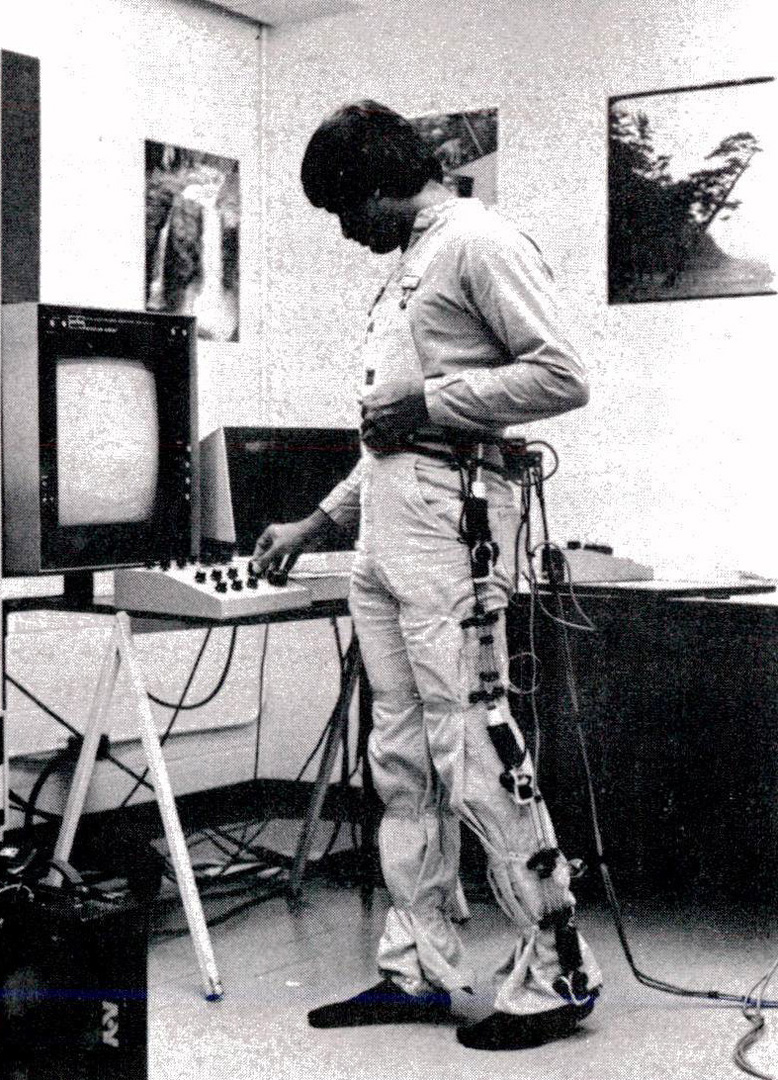“The integration of subjective and objective data in the animation of human movement” by Patla, Calvert and Chapman
Conference:
Type(s):
Title:
- The integration of subjective and objective data in the animation of human movement
Presenter(s)/Author(s):
Abstract:
Animation of human movement can be based either on analog inputs derived directly from actual movements or on symbolic inputs chosen to produce the desired movement. The former type of input can be quite accurate and objective but is a description of the required movement whereas the latter is often quite imprecise and subjective but provides an analysis of the required movements. Two existing systems for a computer based animation are being used to explore the problems involved in integrating such inputs. Specifically, animation driven by analog signals from electro-goniometers is integrated with animation derived from Labanotation commands; the results are illustrated with a short movie.
References:
1. Birdwhistell, R.L., Kinesics and Context: Essays on Body Motion Communication, University of Pennsylvania Press (1970).
2. Benesh R. and J., An Introduction to Benesh Dance Notation, A. and D. Black, London (1956).
3. Eshkol, N. and Wachmann, R., Movement Notation, Weidenfeld and Nicholson, London (1958).
4. Hutchinson, A., Labanotation, Theatre Arts Books, New York (1970).
5. Eshkol, N., Melvin, P., Mitchel, J., Von Foerster, H., and Wachman, A., Notation of Movement, Report BCL 10.0, Department of Electrical Engineering, University of Illinois, Urbana, Illinois (1970).
6. Archer, L.B., A Study of Computer Aided Choreography, Royal College of Art, London (1975).
7. Wolofsky, Z., Computer Interpretation of Selected Labanotation Commands, M.Sc. Thesis, Kinesiology Department, Simon Fraser University, Burnaby, B.C., Canada (1974).
8. Savage, G.J. and Officer, J.M., Choreo: An interactive computer model for choreography, Proc. 5th Man-Machine Communication Conference, Calgary, Alberta, (1977).
9. Weber, L., Smoliar, S.W., and Badler, N., An architecture for the simulation of human movement, ACM Conference, pp. 737-745 (1978).
10. Smoliar, S.W. and Weber, L., Using the computer for the semantic representation of labanotation, in Lusignan, S. and North, J.S. (eds), Computing in the Humanities, University of Waterloo Press, Waterloo (1977).
11. Barenholtz, J., Wolofsky, Z., Ganapathy, I., Calvert, T.W., and O’Hara, P. Computer interpretation of dance notation, in Lusignan, S., and North, J.S. (eds), Computing in the Humanities, pp. 235-240, University of Waterloo Press, Waterloo (1977).
12. Calvert, T.W. and Chapman, J., Notation of movement with computer assistance, Proc. 1978 ACM Conference, pp. 731-734, (1978).
13. Brown, M., A Graphic Editor for Labanotation, MSE Thesis, University of Pennsylvania (1976).
14. Cousins, S. J., Hannah, R.E., Foort, J., A clinically viable electrogoniometer, 2nd Annual Int. Conf. on Rehab. Eng., Atlanta, Georgia (1979).
15. Hoff, F., Dance notation preserved at Motsuji, Dance Research Journal, Vol. 9, pp. 1-4 (1977).
16. Strauss, G.B., Wing, C., and Yuen-wah, L., Translated excerpts of Chinese dance notation,# Dance Research Journal, Vol. 9, pp. 6-11, (1977).
17. Grieve, D.W. and Cavanaugh, P.R., How EMG patterns and limb movements are related to speed of walking, pp. 9-15 in Human Locomotor Engineering, Institution of Mechanical Engineers, London (1971).
18. Benesh, R. and McGuinness, J., “Benesh movement notation and medicine”, Psysiotherapy, 60, pp. 176-178 (1974).




